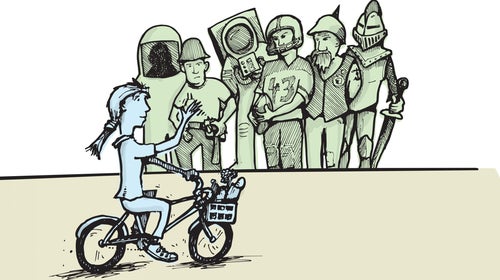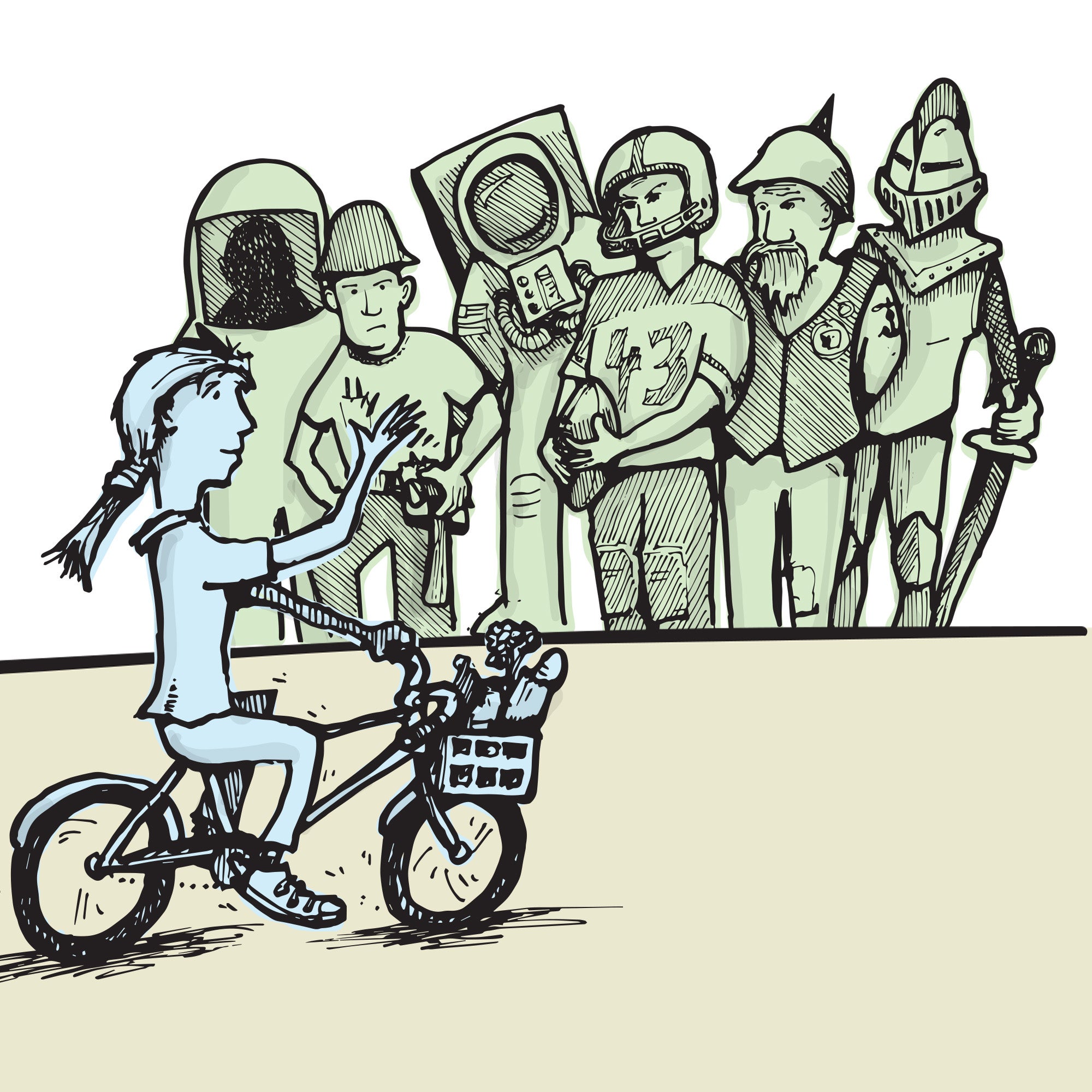Do you get angry when you see someone cycling without a helmet? Do you leave indignant comments under Internet photos of bareheaded cyclists? Do you want to grab these wildly irresponsible riders by the shoulders and shake them out of their utter disregard for their well-being?
If you answered “yes” to any of the above, then you need help.
Don’t worry, I’m here for you. The first step toward getting help is admitting you have a problem, and the problem that you suffer from is called Victim-Blamer Syndrome (VBS). This affliction blocks the compassion receptors in the brain and causes symptoms such as excoriating sexual-assault victims for dressing too provocatively or violent-crime victims for being in the “wrong” neighborhood or bicycle-crash victims for not wearing foam hats when they get run over by truck drivers.
Hey, it’s not your fault. We’re conditioned to respond to tragedy this way. America is a malarial swamp when it comes to VBS, and sooner or later we all catch it. We despise weakness in this country, which is why we resent the vulnerable. This is especially true out on the roads. Traffic is scary, and it’s much easier to feel contempt for those who “have it coming” than it is for you to consider your basic role in keeping both yourself and those around you safe—or that “it” could very well be coming for you too, no matter how you get around or what you’re wearing on your head.
This is why we’ve now reached a point where bicycling without wearing a helmet elicits the sort of visceral scorn reserved for smoking in a nursery or masturbating at a funeral.
It wasn’t always like this for cyclists. In the late 19th century, during the first great bike boom, it was the cyclists themselves who were the bullies. Their great big pennyfarthings scared the horses, and in 1895 a scorcher known as the rode amok on the sidewalks of Brooklyn, knocking down the boys and frightening the women. One can only imagine the horror they felt as they gazed upon his tweed britches and artfully waxed mustache, and one can only hope that someone makes a feature film of his life with Daniel Day Lewis in the starring role.
Well, we certainly got our comeuppance, because since then cyclists and pedestrians and horses and everyone else have been pushed aside (or run down) by the automobile. Two things made this possible:
- All those new macadamized roads the cyclists pushed for, ironically;
- The awesome power of victim blaming. Once upon a time, if you killed someone with your automobile, they took you to jail. Now it’s practically illegal to be out on the road unless you’re in a car, and everyone else is either a jaywalker or an idiot. Incredibly, we’re mostly okay with this, which could never have happened without a scorching communal case of VBS.
But you can’t keep cycling down. Humans need to move, and the bicycle remains the most efficient tool for movement ever devised. Also, it’s fun. So, in the 1970s, fertilized by the counter-cultural zeitgeist, catalyzed by the oil crisis, and no doubt facilitated by the form-fitting synthetic sartorial sensibilities of the time, bikes started coming back in a big way. Of course, the problem was that by now we’d refashioned the landscape to conform entirely to auto travel. This gave rise to two important developments. One of these was “vehicular cycling,” a concept John Forester articulated in his 1975 book Effective Cycling, and which basically means taking the lane and riding in among the drivers like you’re one of them. The other, also in 1975, was the debut of the Bell Biker, which was the first lightweight EPS foam bicycle helmet.
The Forester approach certainly had its merits on the autocentric streets of America. However, expecting most people to hop on a bike and mix it up with three lanes of fast-moving car traffic was like telling prospective puppy customers they should skip the cute pooches and go with full-grown attack dogs. The helmet, on the other hand (or head), was an immediate hit. Just strap it on and ���Ǿ���à! Instant safety! And not only was the helmet an easy way for cyclists to feel like they were fulfilling their basic safety requirements, but it allowed everyone else to discharge their responsibilities, too—even if it didn’t solve the underlying problem. Cities, police, drivers, insurance companies, news media…what could be easier than telling cyclists to wear their helmets, then blaming them for not doing so when things went awry?
The bicycle helmet is a VBS sufferer’s dream come true. If cyclists wear helmets, you don’t have to worry about them, and if they don’t, then whatever happens to them is their own fault. This is why we’ve now reached a point where bicycling without wearing a helmet elicits the sort of visceral scorn usually reserved for smoking in a nursery or masturbating at a funeral. Our fixation on the bicycle helmet is completely out of proportion to even the most optimistic analysis of their safety benefits, as well as to the purported dangers of riding a bicycle without one. Really, the only explanation for our helmet fervor is that it’s a manifestation of our deep, VBS-induced contempt for the act of casual cycling.
This isn’t to say helmets are useless or that you shouldn’t wear one, but it is to say that if you find yourself getting angry when others don’t, then you’re kind of being an asshole. And by being an asshole you’re undermining the , which is getting more people out there on bikes.
Cycling is enjoying yet another boom cycle, and fortunately we’ve moved on from Forester and embraced the necessity for infrastructure. Now it’s time to encourage even more people to use that infrastructure by dialing back on the helmet mania. Safety and shame just aren’t compatible.
Illustration by Taj Mihelich


